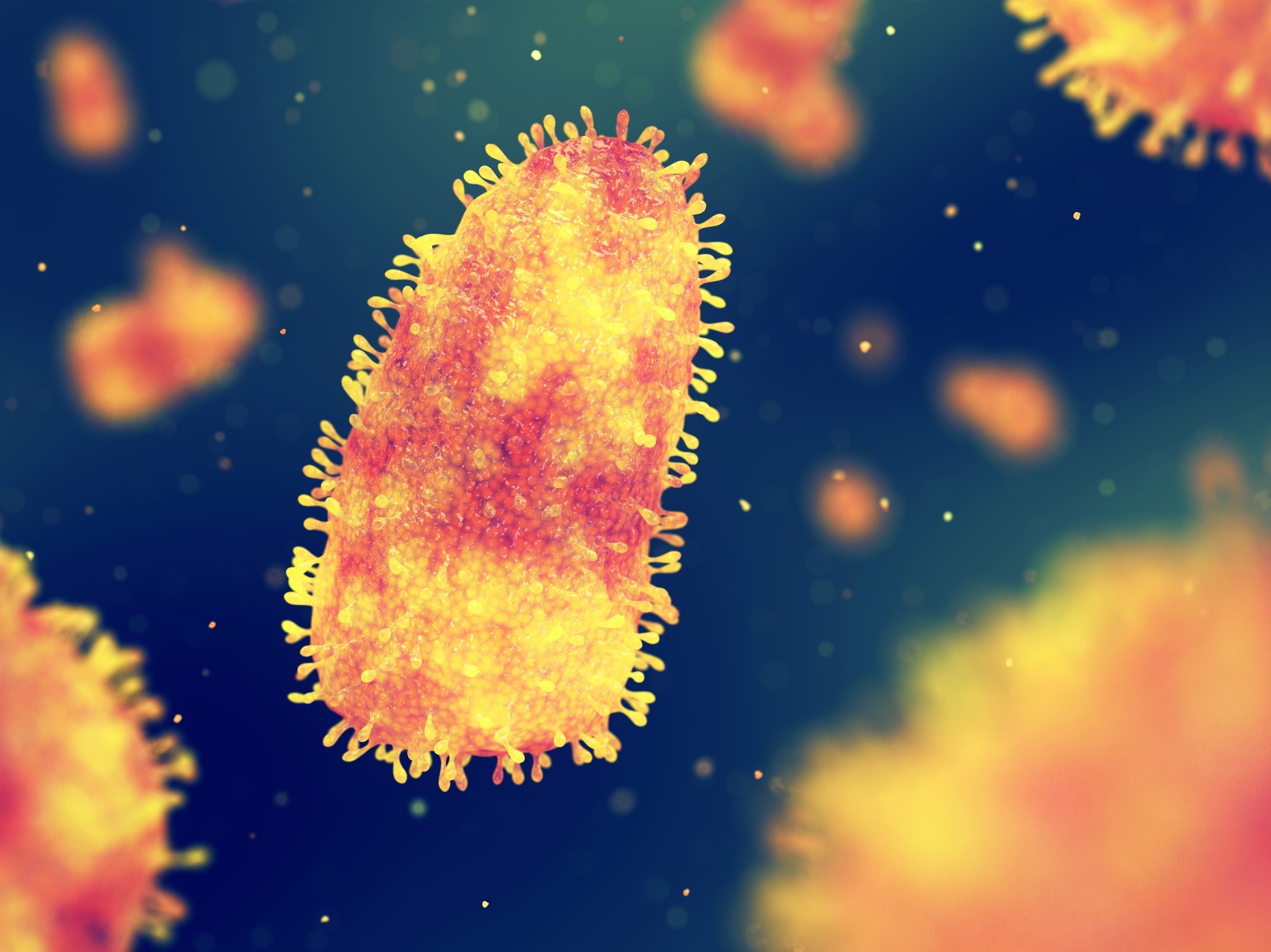Scientists have developed a novel mRNA-based vaccine candidate against the rabies virus. The vaccine induces a strong antibody response and exhibits high protective efficacy against lethal rabies infection in mice and dogs. A full report about the vaccine has been published in the Virology Journal.
 Study: An mRNA-based rabies vaccine induces strong protective immune responses in mice and dogs. Image Credit: nobeastsofierce / Shutterstock
Study: An mRNA-based rabies vaccine induces strong protective immune responses in mice and dogs. Image Credit: nobeastsofierce / Shutterstock
Background
Rabies is a lethal zoonotic disease caused by the rabies virus. Worldwide, approximately 59,000 people die from this infection each year. A higher incidence rate is observed in Asia and Africa.
Rabies virus is a non-segmented negative-strand RNA virus that primarily affects the central nervous system and causes fatal infection. The glycoprotein expressed on the viral envelope is vital for viral host cell entry through viral envelop-host cell membrane fusion. This makes the protein the primary target for neutralizing antibodies and vaccine development.
No therapeutic interventions are currently available for rabies. However, since the virus remains at the infection entry site for days to weeks, anti-rabies immunization before or just after exposure could effectively block its translocation to the central nervous system and prevent fatal outcomes.
Inactivated vaccines developed against the rabies virus have shown significant protective efficacy. However, about 4 – 5 vaccine doses are required to achieve optimal protection. Live-attenuated virus vaccines are also effective against rabies; however, these vaccines are associated with many safety concerns. Moreover, the production of these vaccines is costly and time-consuming.
In the current study, scientists have developed an anti-rabies vaccine candidate using the latest mRNA-based technology. The main benefits of mRNA-based vaccines are simple and cost-effective production and robust and durable protection. Moreover, these vaccines are safe because they do not contain any live virus particles.
Anti-rabies mRNA vaccine development
The DNA sequence of rabies virus glycoprotein was used as a vaccine antigen. The sequence was encapsulated into lipid nanoparticles to create the mRNA-based vaccine candidate.
The immunogenicity of the vaccine was assessed by immunizing mice with different vaccine doses via the intramuscular route. The findings revealed that higher vaccine doses could induce a strong and durable anti-glycoprotein IgG antibody response. Furthermore, regarding cellular immunity, the vaccine administered once or twice caused a significant induction in T-cell response.
Protective efficacy of the vaccine in mice
Immunized mice were intracerebrally challenged with rabies virus at day 14 post-immunization to determine the vaccine's protective efficacy. On day 14 post-immunization, the mice exhibited strong binding and neutralizing antibody response, slightly higher than mice immunized with inactivated vaccine.
Regarding protective efficacy, the findings revealed that the mice immunized with two doses of mRNA vaccine had a 100% survival rate compared to only 66% in mice immunized with two doses of inactivated vaccine. In addition, all surviving mice showed a robust neutralizing antibody response and no traces of the virus in the brain at day 21 post-challenge.
Different dosing intervals were tested in the study to obtain the optimal vaccination regimen. The findings revealed that the two doses of the vaccine at 14 days induced significantly higher antibody response and survival rate compared to the 3-day or 7-day dosing interval.
Protective efficacy of the vaccine in dogs
Both two-dose and three-dose vaccination regimens were tested in dogs. Specifically, a low-dose and a high-dose vaccine was administered twice at a 7-day interval or thrice at 7-day and 21-day intervals.
The findings revealed that the dogs immunized with dosage and interval combinations exhibited strong neutralizing antibody response at days 9, 11, 13, and 35 post-immunizations.
The dogs were challenged with a 50-fold higher than an average lethal dose of the virus at day 35 post-immunization. The findings revealed that the dogs immunized with two or three vaccine doses exhibit a 100% survival rate. A similar protective efficacy was observed in mice immunized with five doses of the inactivated vaccine.
The post-exposure vaccine efficacy was tested by challenging the dogs first with the virus, followed by two-dose or three-dose immunization after six hours of viral challenge. The protective efficacy assessed at month three post-challenge revealed that the dogs immunized with two or three doses of the high-dose vaccine achieved a 100% survival rate. In contrast, the dogs immunized with five doses of the inactivated vaccine showed only a 33% survival rate.
Study significance
The anti-rabies mRNA vaccine candidate developed in the study demonstrates robust and durable antibody response in mice and dogs. The vaccine also exhibits high protective efficacy against the rabies virus in pre- and post-exposure conditions.
The scientists emphasized that human clinical trials are necessary to determine the vaccine's effectiveness and safety.